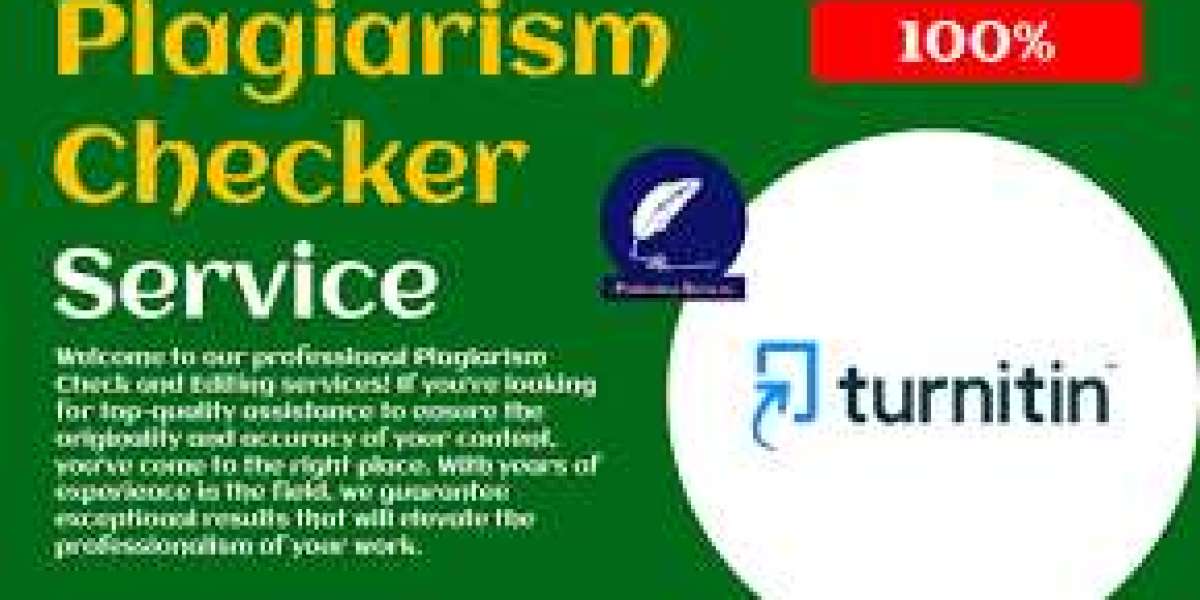Introduction
In today’s rapidly growing digital landscape, originality holds immense value. Whether you are a student, blogger, educator, or content marketer, ensuring that your work is free from copied material is crucial. This is where a plagiarism checker becomes an essential tool. Not only does it help in identifying duplicated content, but it also protects your credibility and intellectual integrity.
What is a Plagiarism Checker?
A plagiarism checker is a specialized software or online service that scans written content and compares it with billions of other sources available on the internet, databases, journals, and academic archives. Its primary goal is to detect similarities or exact matches between texts. These tools help users discover whether parts of their content have been unintentionally or deliberately duplicated.Most plagiarism checkers highlight the copied sections, provide links to the original sources, and give a percentage score that reflects the uniqueness of the content. This feature proves invaluable, especially for academic institutions, journalists, SEO professionals, and authors.
Why Originality Matters More Than Ever
In the digital era, where information is shared and consumed at lightning speed, original content has become a form of currency. Search engines like Google reward unique and valuable content with better rankings, while penalizing sites with duplicate material. For students, submitting plagiarized work can lead to academic penalties or even expulsion.Furthermore, in professional environments, copying someone else’s work without giving due credit can harm your reputation, result in lawsuits, and destroy trust. That’s why utilizing a plagiarism checker is no longer optional but a necessity.
Key Features of a Good Plagiarism Checker
With dozens of plagiarism detection tools available, selecting the right one is essential. Here are some features to look for:
Deep Database Scanning
Top plagiarism checkers scan through massive databases including websites, academic journals, digital libraries, and archived content to ensure a comprehensive check.
User-Friendly Interface
A simple and intuitive interface makes it easy for users to upload or paste their text and receive instant results.
Detailed Similarity Reports
An effective tool will provide detailed results that highlight matching phrases, link to the sources, and display the overall originality percentage.
Support for Multiple File Formats
Whether you're uploading a PDF, Word document, or plain text file, a good plagiarism checker should support different file types.
See more article: plagiatsprüfer
Real-Time Checking
Many tools offer real-time scanning and instant feedback, allowing users to quickly edit and improve their content.
Benefits of Using a Plagiarism Checker
Maintaining Academic Honesty
For students and educators, a plagiarism checker plays a key role in maintaining academic integrity. By identifying copied material, students can revise their work before submission, and educators can verify the authenticity of assignments.
Improved Writing Skills
When a writer learns that some parts of their content are similar to published material, it encourages them to rephrase or paraphrase their ideas, improving their writing and critical thinking skills.
Better SEO Rankings
For content creators and digital marketers, duplicate content is a major SEO threat. Using a plagiarism checker ensures that blog posts and web content are unique, helping websites achieve higher rankings on search engines.
Avoiding Legal Consequences
Copying content without permission can lead to copyright infringement issues. A plagiarism checker helps avoid such risks by ensuring the originality of the text.
Building Trust and Credibility
Original work builds trust with readers, clients, and audiences. When your content is fresh and unique, it reflects your effort and professionalism.
Common Types of Plagiarism Detected by a Plagiarism Checker
While most people associate plagiarism with word-for-word copying, it can take many forms. Fortunately, advanced plagiarism checkers can identify a range of plagiarism types:
Direct Plagiarism: Copying text exactly without attribution.
Paraphrased Plagiarism: Rewriting someone else's content in different words without giving credit.
Self-Plagiarism: Reusing one's own previously published work without citation.
Mosaic Plagiarism: Interspersing someone else’s phrases or ideas into your own work without acknowledgment.
Accidental Plagiarism: Unintentionally using someone’s words or ideas without proper referencing.
By recognizing these variations, a plagiarism checker can help maintain the authenticity of your content.
How to Use a Plagiarism Checker Effectively
Using a plagiarism checker is straightforward. Here’s a step-by-step guide:
Copy and Paste or Upload: Either paste your text into the tool’s interface or upload your document file.
Initiate the Scan: Click on the "check" or "scan" button.
Review the Report: Once the scan is complete, study the highlighted areas and check the percentage of matching text.
Make Revisions: Rephrase or paraphrase any flagged content, and cite sources where necessary.
Re-check: Run the checker again to ensure your content is now 100% original.
Free vs. Paid Plagiarism Checkers
Many online plagiarism checkers are available for free, while others offer advanced features under paid plans. Free versions are useful for quick scans and small documents. However, premium versions provide more detailed analysis, deeper database access, and plagiarism removal suggestions.Popular paid tools like Turnitin, Grammarly Premium, and Copyscape offer higher accuracy and are widely used in academic and professional settings.
Final Thoughts
In a world that values originality and ethical writing, a plagiarism checker is not just a tool—it is a necessity. Whether you’re crafting a research paper, publishing a blog, or submitting an article, running your content through a plagiarism checker can save you from embarrassment, penalties, and reputational damage.Embracing such tools is a proactive step toward responsible writing, academic honesty, and digital authenticity. Don’t wait to be accused—check your content, revise diligently, and take pride in producing something truly your own.
For more and latest article : Clicking Here








